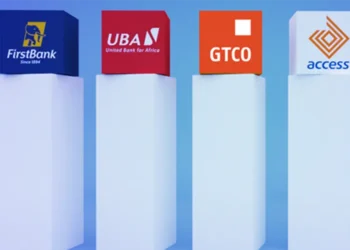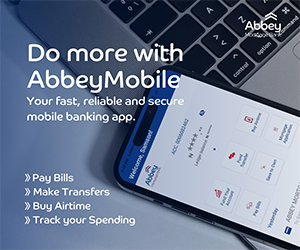Personal and business advisors are constantly at loggerheads on the topic of utilising debt instruments.
While the anti loan army are staunch and adamant that loans must be avoided like the plague, the other divide advocates loans if need be. However, no matter the side of the divide you find yourself, predatory loans are frowned upon and discouraged.
Predatory loans are loans that are malicious and do not serve the interest of the borrower. They usually attract very high interests and are difficult to service.
Most often than not, these kinds of loans target vulnerable borrowers who may not have access to traditional credit or may not fully understand the terms of the loan they are taking out. In the UK for example, a recent Bloomberg report estimates that around two million people use Buy Now Pay Later BNPL solutions (a mild form of predatory lending) for essentials like food, clothing and medicine.
Credit ratings and scores were actually designed not just to mitigate risk for lenders but to protect vulnerable borrowers. With new solutions like BNPL and predatory lenders, all background checks and ratings have been thrown out of the window, exposing vulnerable borrowers to loan opportunities.
How to determine if loans are predatory
A look at the major lending mobile applications in Nigeria like Palmpay, Fairmoney, Easemoni etc reveals that interests in a three month period ranges between 30 to 50%. This is more than our YoY inflationary figures of 29.90% and the prevailing interest rates as per the Cash Rate of 22.75% set in February.
As per the numbers, these predatory lenders manage to generate roughly twice the annual interest rates albeit in a quarter of a year.
In short, to determine a predatory loan, you want to see if their interest rate
is way higher than the prevailing interest rates, charge outrageous penalties for default and adopt unethical means to pressure borrowers into paying back.
How predatory loans are taking advantage of hardship
According to the World Bank, in 2024, about 26.4 million Nigerians would grapple with dangerously high levels of food insecurity. Well, I’d say that we don’t even need data to tell us that as the groans of hunger and hardship can be heard across the country.
Apparently, many households are struggling to put food on the table and are in dire need of a lifeline.
These circumstances are prime for predatory lenders who understand that a “hungry” man would accept food before he realizes that there is poison in it.
Just like the biblical story of Esau, many a hungry man would sell their birthright before realizing later on how foolish their decision was.
For example, Easemoni offers loans to Opay users and amounts vary depending on the cash inflow into customers’ accounts.
However, rates as high as 45% in three months (90 days period). Not only are the interest rates absurd, but the penalty for defaulters is also even more ridiculous. Defaulters attract a 1% interest everyday if they default on their loan repayment.
Now let’s look at a scenario where Ade a vulnerable Nigerian borrows N50,000 from Easemoni and must pay back N74,000 in 90 days.
Suppose he defaults for another month and half, his penalty would have risen to 45% bringing his total debt to 90% of his loan all within a four and half month period. This is outrageous!
But I need a quick fix
Most who patronize these services claim to need a quick fix. Maybe its a week or two to payday and you are out of groceries or an emergency came up. I would argue however that better financial discipline would save many from ever needing a quick fix. For example, as per a CNBC survey, in America only 44% of respondents say they can afford a $1000 emergency expense.
In Nigeria, the Nigerian Deposit Insurance Commission NDIC boss revealed that only 0.6% of Nigerians have N500,000 or more in their savings account. These numbers tells us that a bulk of people live their lives without an emergency savings.
You would never need a quick fix if you have an emergency fund. A rule of thumb is to have a least six months of living expenses saved up in case of an emergency.
Unconventional repayment collection strategies from “loan sharks”
As stated earlier, one way to determine if a loan offering is predatory is looking at examples of defaulters and how they were treated. In 2022, a loan company went as far as publishing obituaries and declaring a user who failed to repay the loans dead.
These customers were very much alive and kicking. These unethical repayment strategies have since drawn the interest of regulators who have stepped in.
Predatory loan regulatory clampdown in 2024
In September 2023, about 37 (thirty-seven) loan applications were banned by the Nigerian government and delisted from the Google play store.
These loan apps were found to offer outrageous interest rates, and unethical punishment to defaulters. This move from the Federal Competition and Consumer Protection Commission (FCCPC) has sanitized the space in a sense but more has to be done.
Verdict: Are predatory loans worth it in 2024?
The answer to this is a resounding no. If you find yourself always in need of a bailout then there are high chances that you have a financial management problem. You may be living way above your means or spending impulsive; or both.
The “emergencies” you find yourself in every now and then are simply symptoms of poor personal finance.
Unlike traditional lenders, it is evident that predatory lenders do not have the interest of borrowers at heart and are only concerned about making giant returns and would go to any length to get this.
On the plus side, your constant need for bailouts may have helped you unearth a bigger money problem and the earlier you start solving it, the better.















.gif)






